Samsung is pushing the development of HBM and DIMM PIM and is showing concepts for the future that promise high performance with low energy requirements. After a test run in cooperation with Xilinx accelerator solutions, the many theories are now to be followed by real action.
Processing-In-Memory (PIM) is Samsung's approach to bottlenecks when it comes to memory in systems to bypass. Just as Intel sees Optane as a possible solution here, Samsung is also showing the well-known pyramid, albeit with slightly different storage solutions for the future. In addition to classic DRAM, the new solutions should have a broad field available, because they should not only appear as an expensive HBM-PIM variant, but also as DIMM-PIM and LP5-PIM.
-
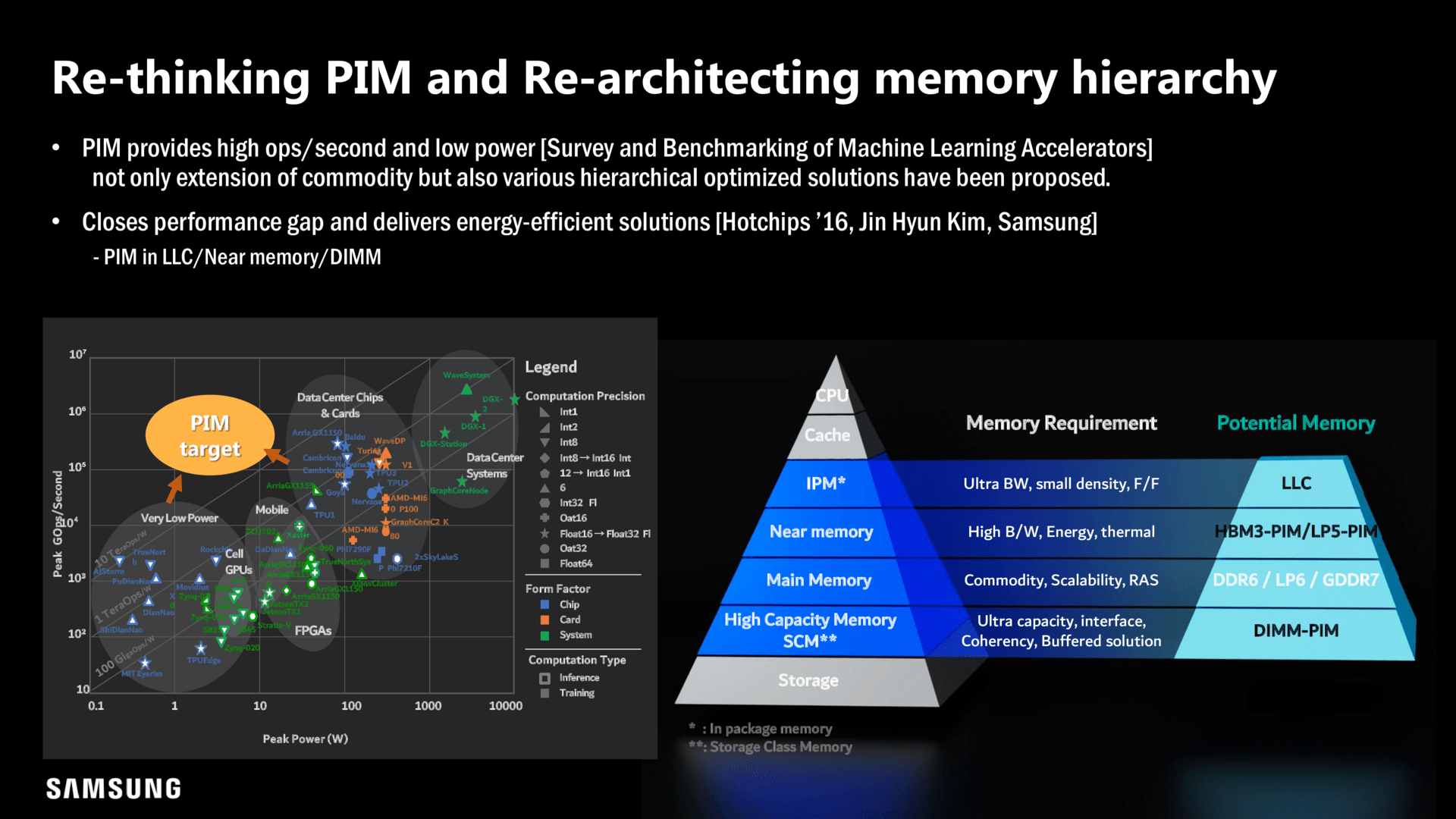 Samsung PIM for Hot Chips 33 (picture: Samsung)
Samsung PIM for Hot Chips 33 (picture: Samsung)
image 1 of 14
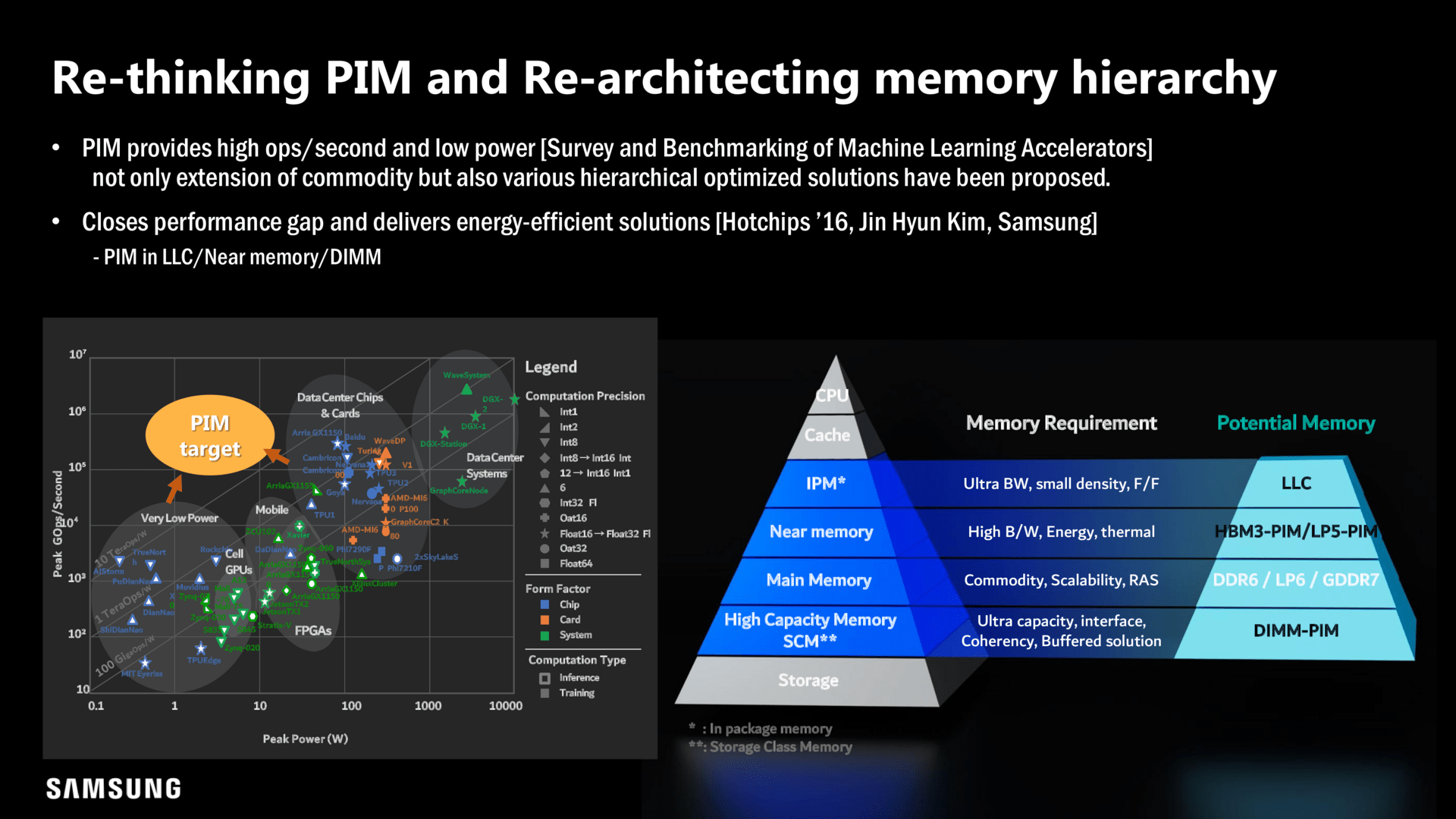 Samsung PIM for Hot Chips 33
Samsung PIM for Hot Chips 33 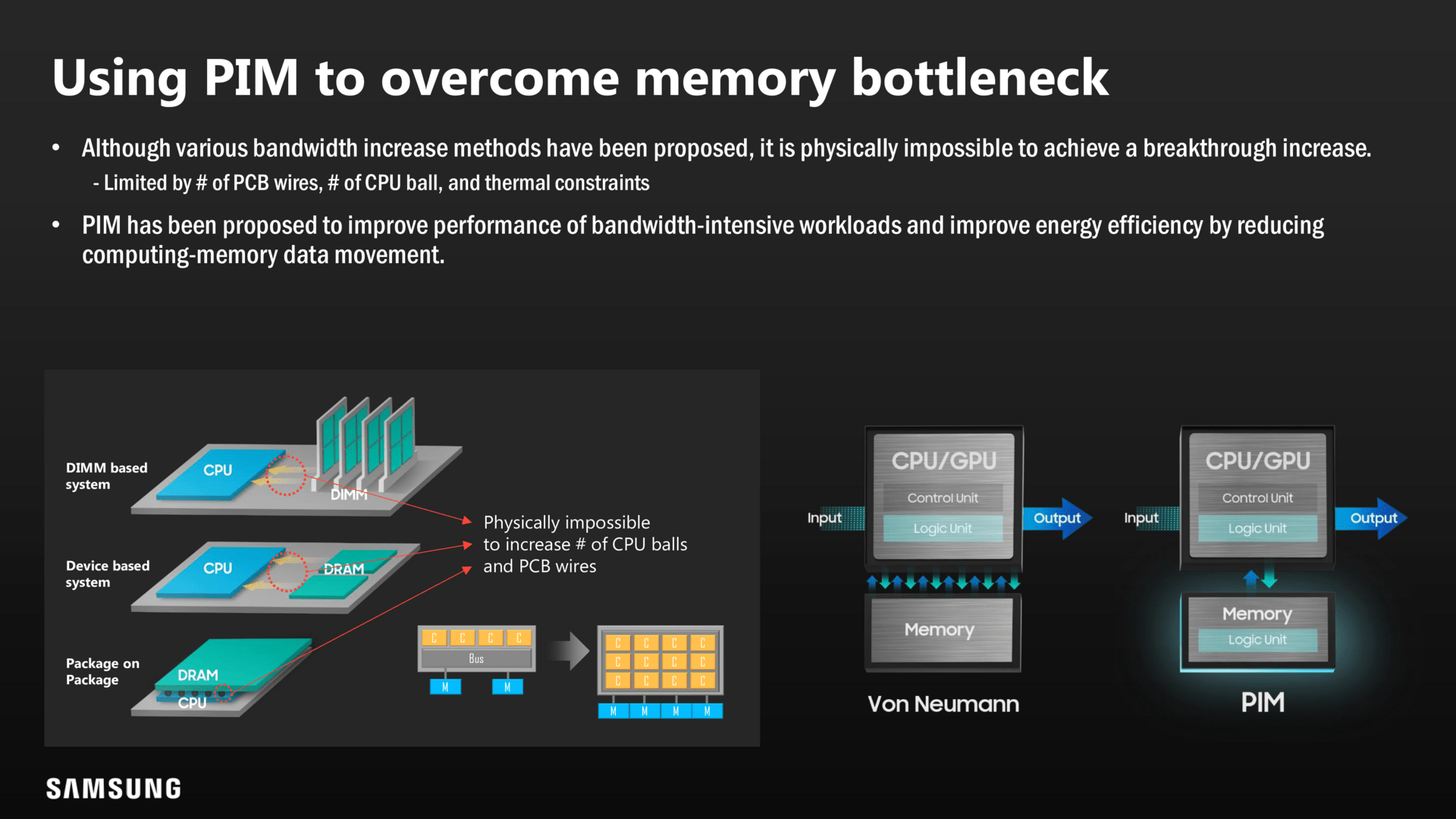 Samsung PIM for Hot Chips 33
Samsung PIM for Hot Chips 33 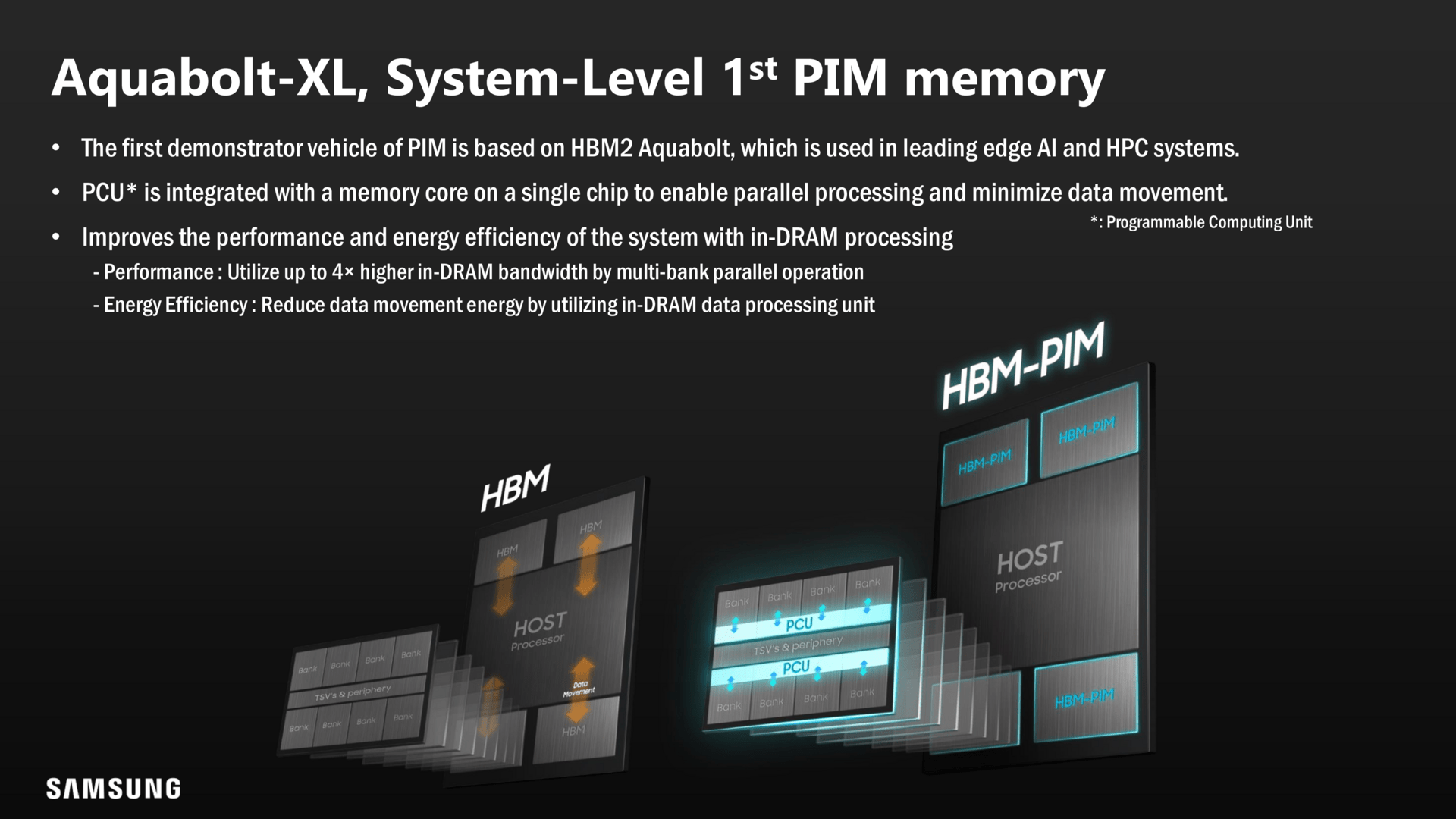 Samsung PIM for Hot Chips 33
Samsung PIM for Hot Chips 33  Samsung PIM for Hot Chips 33
Samsung PIM for Hot Chips 33 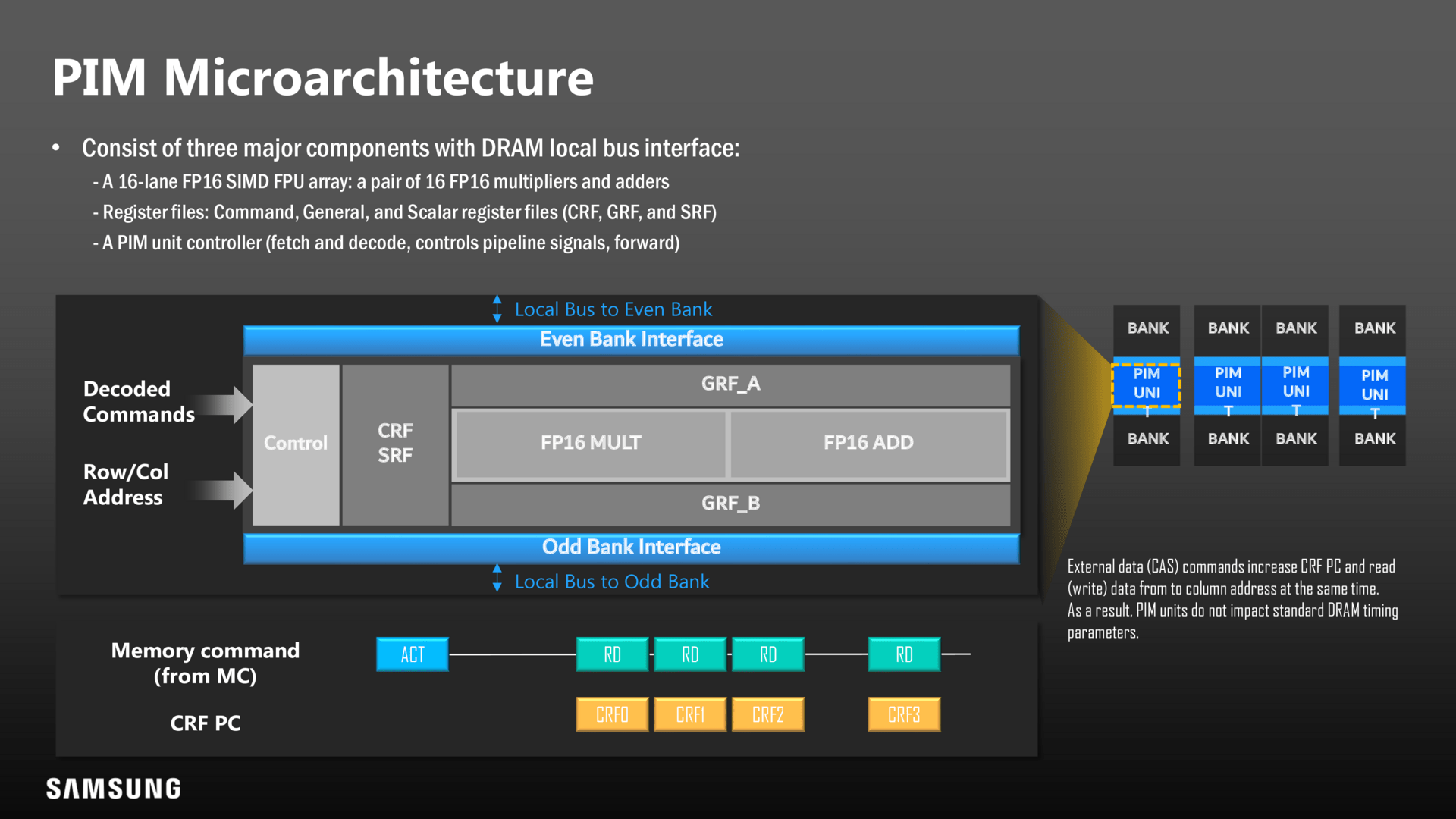 Samsung PIM for Hot Chips 33
Samsung PIM for Hot Chips 33  Samsung PIM for Hot Chips 33
Samsung PIM for Hot Chips 33 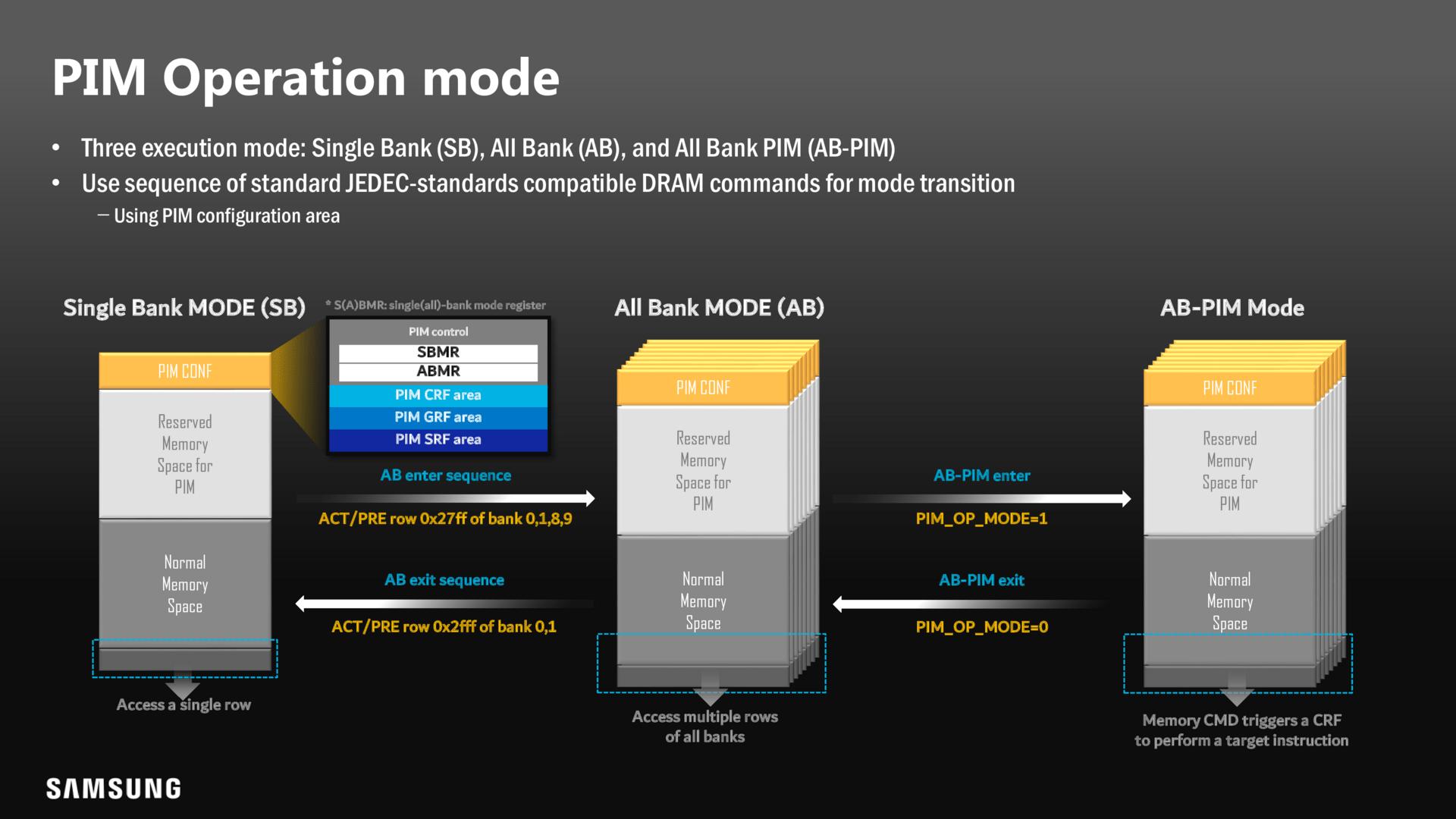 Samsung PIM for Hot Chips 33
Samsung PIM for Hot Chips 33 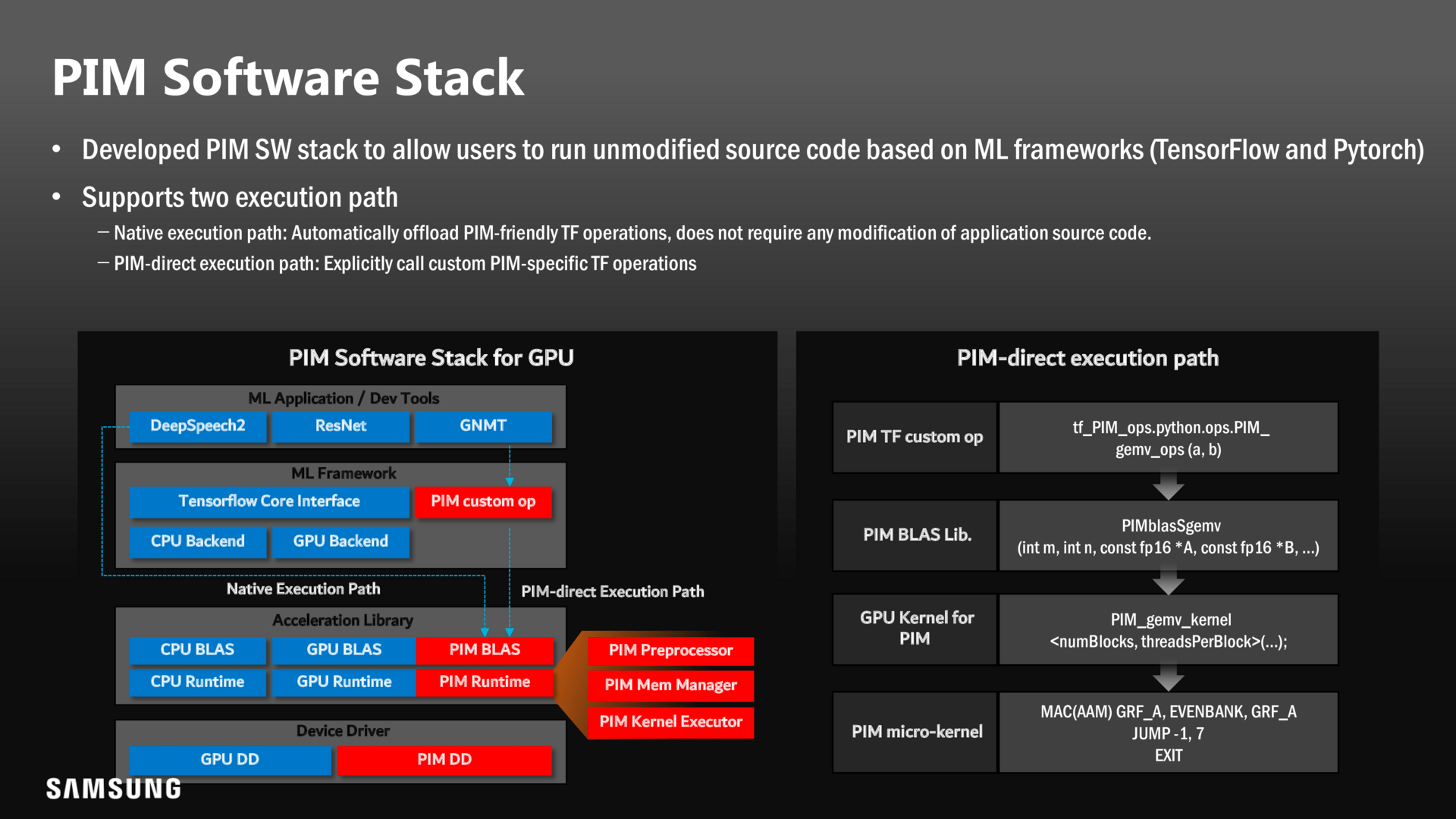 33 Samsung PIM/figure>
33 Samsung PIM/figure>
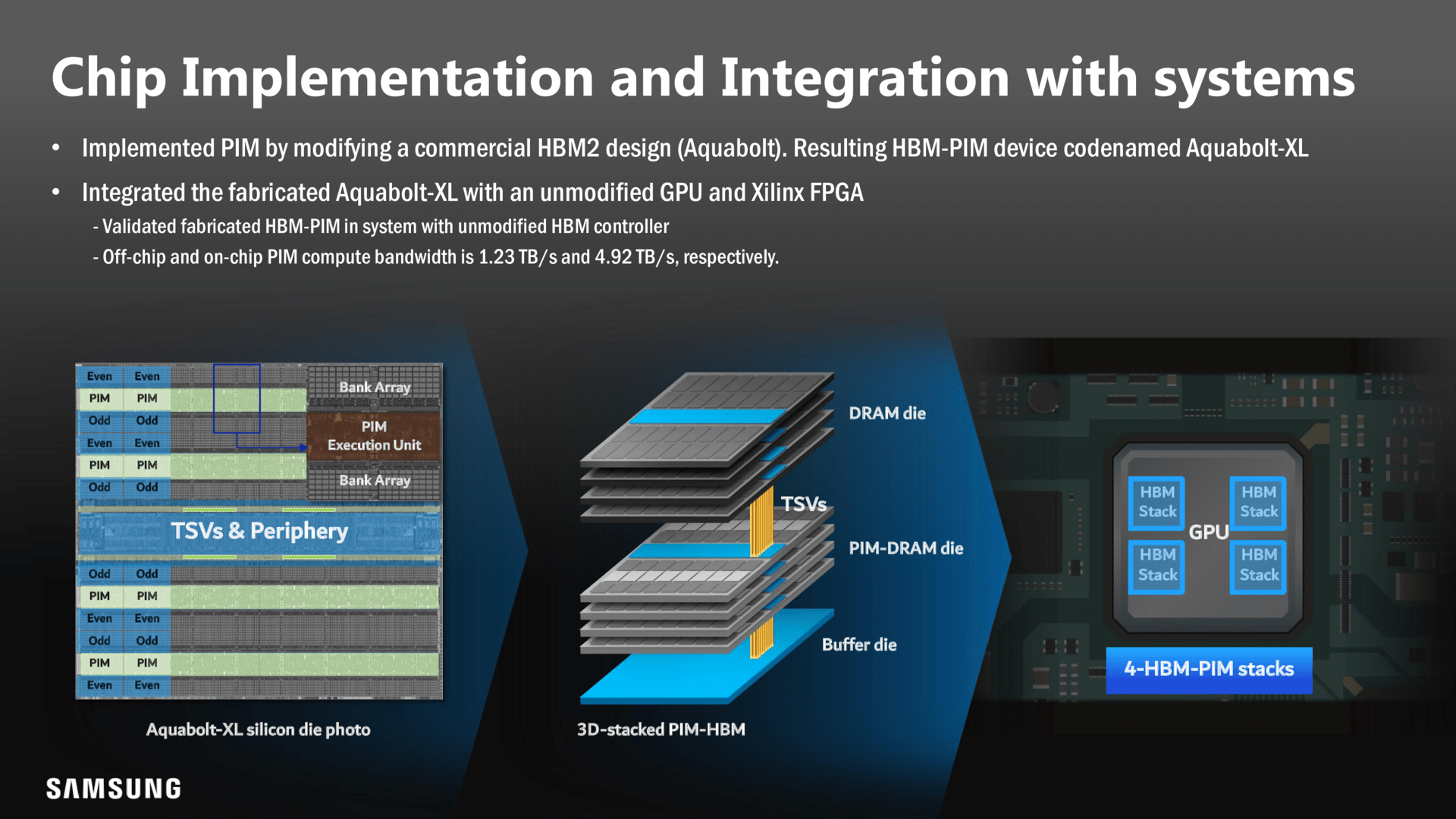 Samsung PIM for Hot Chips 33
Samsung PIM for Hot Chips 33 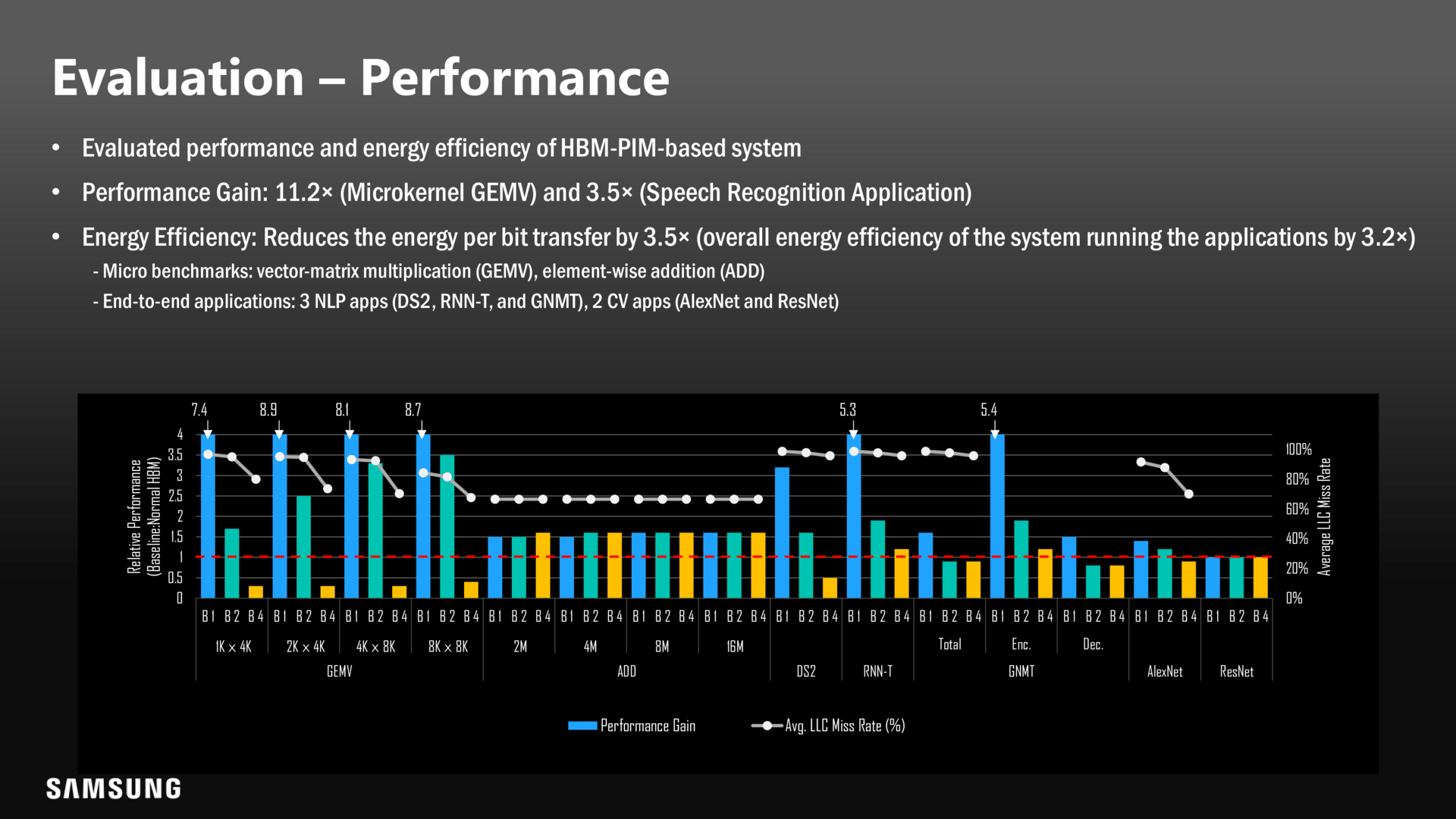 Samsung PIM for Hot Chips 33
Samsung PIM for Hot Chips 33  Samsung PIM for Hot Chips 33
Samsung PIM for Hot Chips 33  In order to first convince the audience of the possibilities, Samsung went ahead with an example. A Xilinx Alveo U280 was converted for test purposes. HBM was exchanged for HBM-PIM and the system was now able to perform FP16 operations as a second option in addition to the classic memory mode using normal DRAM commands. The previously theoretically determined values were ultimately met almost exactly in the test. The system was even a tad faster than expected (2.1x was aimed for), but the energy requirement was slightly higher (it should be more than 70 percent reduction): The system performance was increased by a factor of 2.49 and the energy requirement by 62 Percent are reduced.
In order to first convince the audience of the possibilities, Samsung went ahead with an example. A Xilinx Alveo U280 was converted for test purposes. HBM was exchanged for HBM-PIM and the system was now able to perform FP16 operations as a second option in addition to the classic memory mode using normal DRAM commands. The previously theoretically determined values were ultimately met almost exactly in the test. The system was even a tad faster than expected (2.1x was aimed for), but the energy requirement was slightly higher (it should be more than 70 percent reduction): The system performance was increased by a factor of 2.49 and the energy requirement by 62 Percent are reduced.
- < li>
 Samsung PIM for Hot Chips 33 (Image: Samsung)
Samsung PIM for Hot Chips 33 (Image: Samsung)  Samsung PIM for Hot Chips 33
Samsung PIM for Hot Chips 33  Samsung PIM for Hot Chips 33
Samsung PIM for Hot Chips 33 Designing the chips directly from the factory is one approach to reach the masses, but it has to be thought further. Here Samsung is targeting the classic DRAM market as well as the LPDDR business. Prototypes of a noticeably high DRAM bar with additional buffer chips, called Acceleration DIMM (AXDIMM), show twice as high performance with around 40 percent lower energy consumption in initial test runs in AI applications. The big advantage is the classic DIMM format: a simple exchange without changes to the system should work without any problems. This is exactly the approach taken by Intel, for example, with Optane Memory.
-
 Samsung PIM for Hot Chips 33 (Image: Samsung)
Samsung PIM for Hot Chips 33 (Image: Samsung)
Image 1 of 4
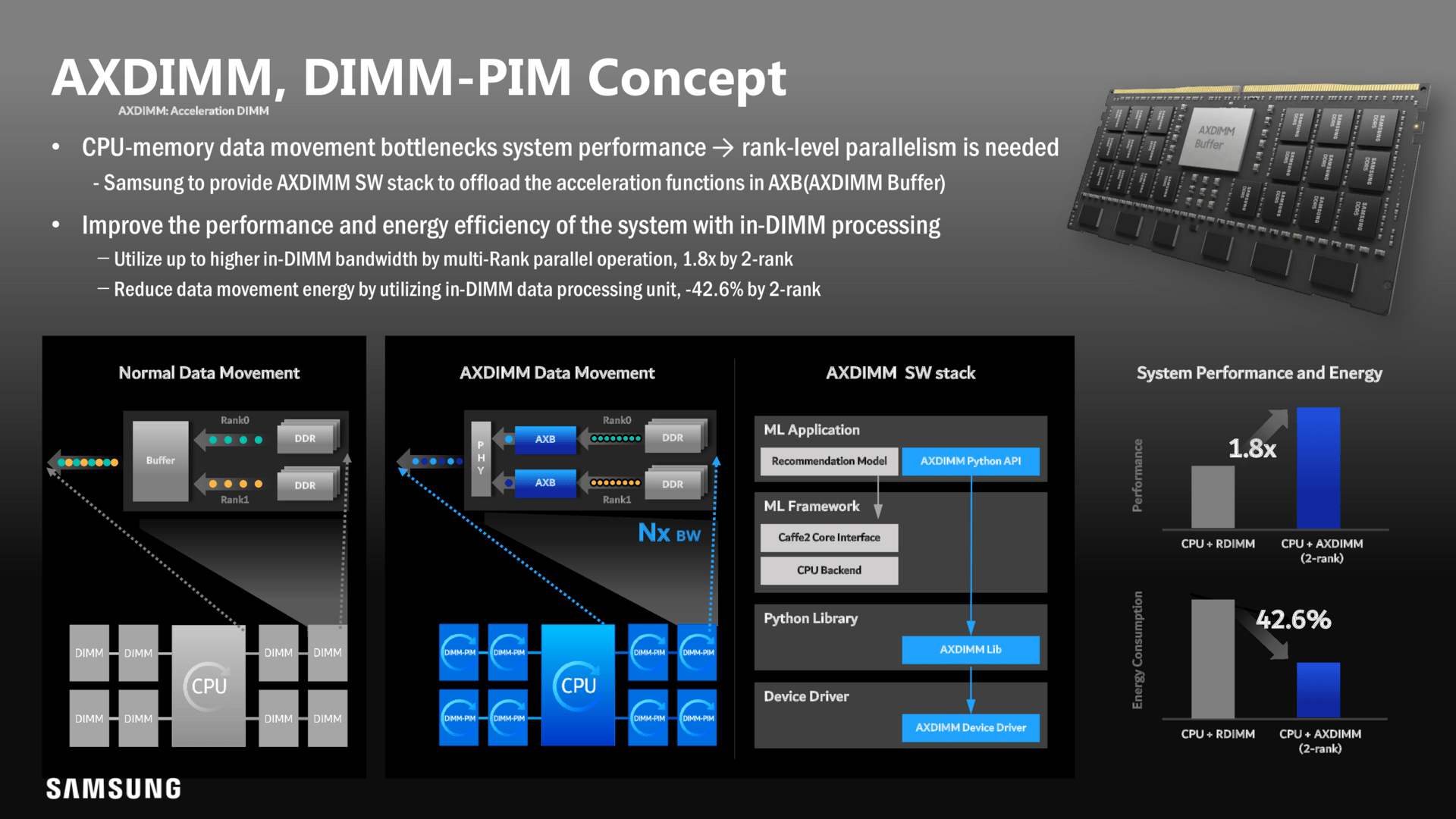 Samsung PIM for Hot Chips 33
Samsung PIM for Hot Chips 33  Samsung PIM for Hot Chips 33
Samsung PIM for Hot Chips 33  With LPDDR5-PIM, which is traditionally soldered directly to circuit boards again, the energy saving increases again to over 60 percent with doubled performance. It will be many months before such solutions can be present on the market. For the first half of 2022, Samsung is planning a kind of standardization of the conditions in order to be able to publish them later in a broad ecosystem with appropriate support.
With LPDDR5-PIM, which is traditionally soldered directly to circuit boards again, the energy saving increases again to over 60 percent with doubled performance. It will be many months before such solutions can be present on the market. For the first half of 2022, Samsung is planning a kind of standardization of the conditions in order to be able to publish them later in a broad ecosystem with appropriate support.
-
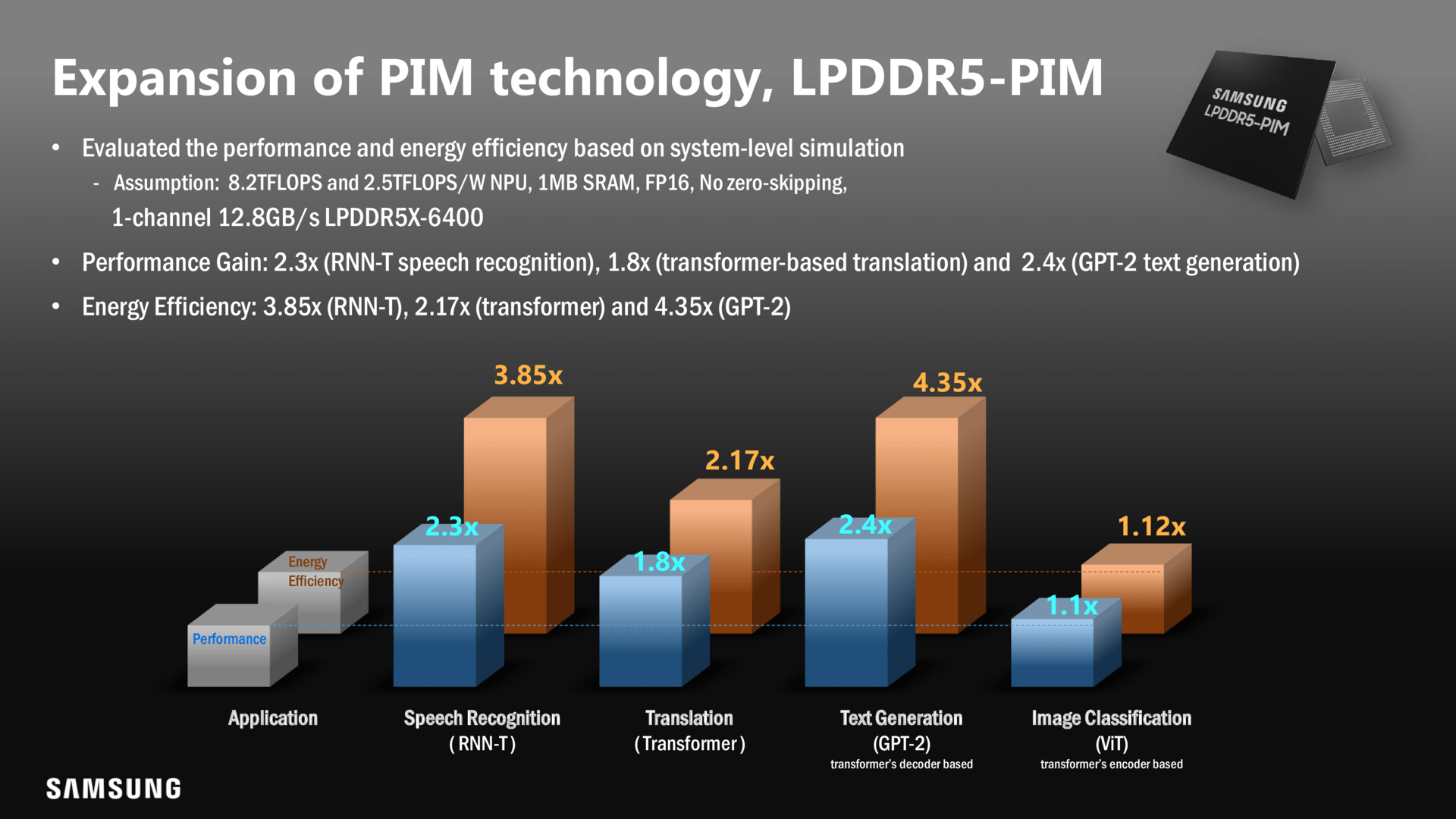 Samsung PIM for Hot Chips 33 (picture: Samsung)
Samsung PIM for Hot Chips 33 (picture: Samsung)
Image 1 of 2
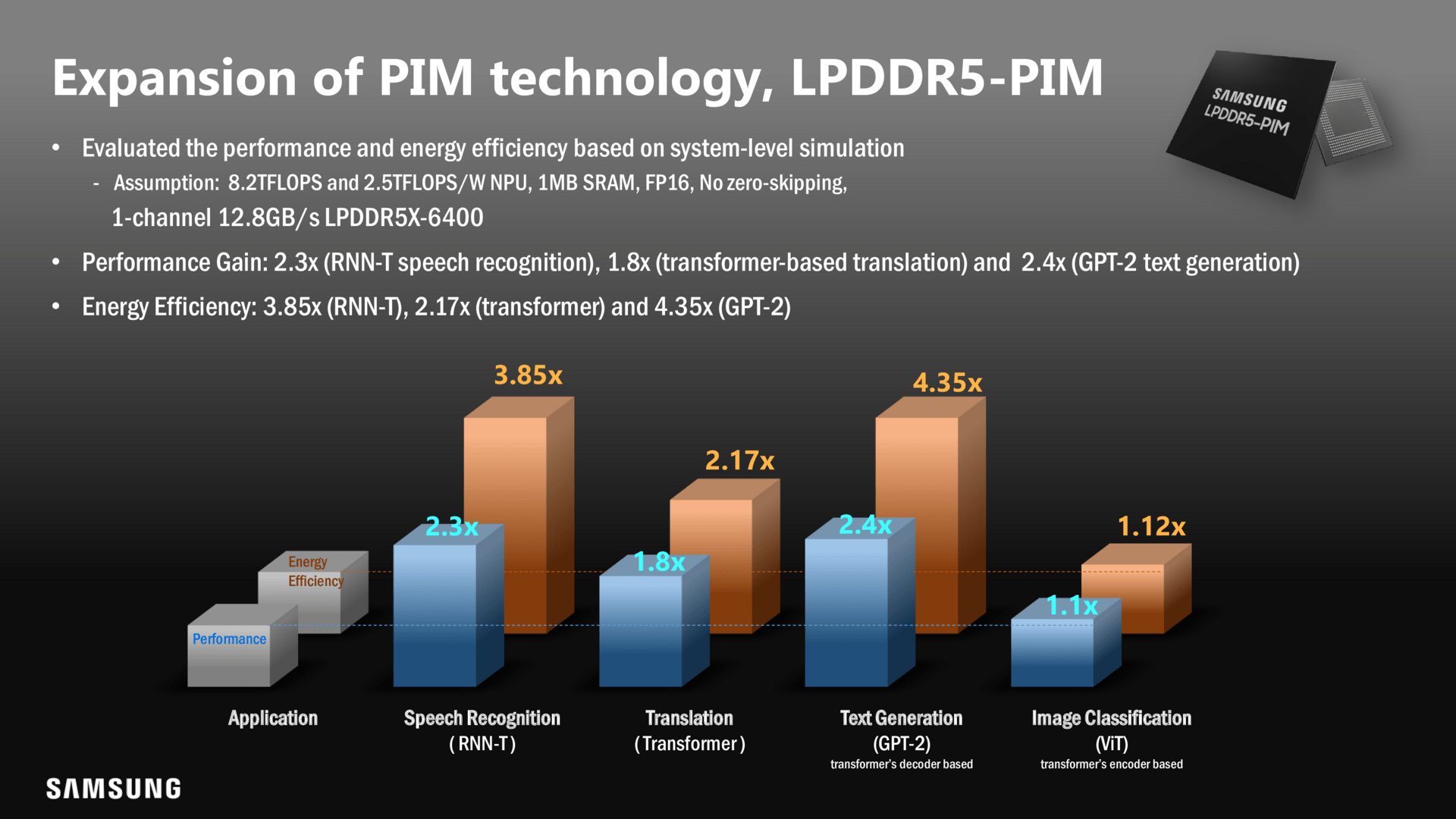 Samsung PIM for Hot Chips 33
Samsung PIM for Hot Chips 33